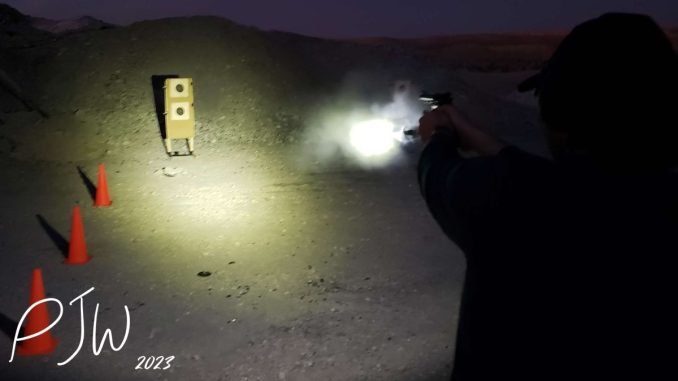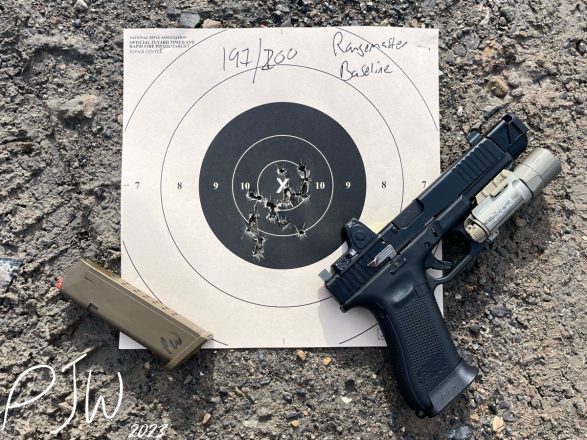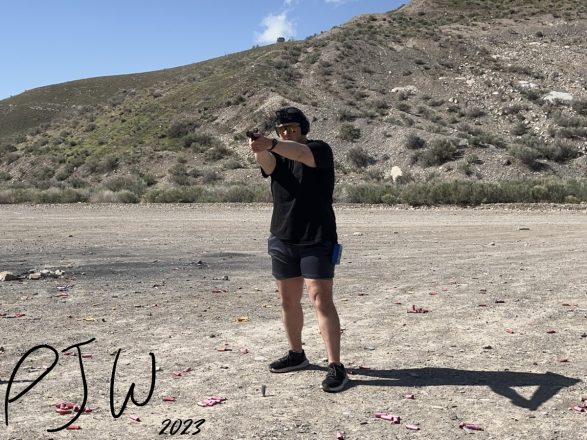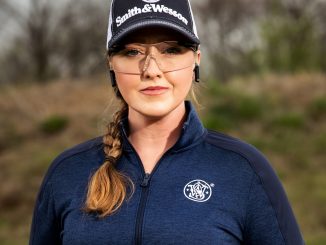
Shooting drills are something that many of us do. Some are quite simple, while others are much more complicated. However, how do we differentiate between a shooting drill, and a shooting exercise? The topic came up with my local shooting group recently, and I wanted to try and help to answer that question. What separates a drill from an exercise?
Exercises Vs. Drills
For me, this is a simple differentiation.
Shooting exercises are generally very basic. They may require us to use a few of our skills, but we are generally completed one or two tasks. These are isolation exercises, with focus on (generally) improving a specific action. As an example, something like drawing and firing one round is an exercise. Practicing a slide lock reload is an exercise. Just practicing the drawstroke without firing is an exercise. With these, we’re working on improving specific skills, isolating them to have growth. We can track time and score for performance metrics, but these are less benchmark-y, and more repetitive.
Shooting drills are tests. They are benchmarks that we use to see how well we can perform, needing to use multiple skills to perform to a par time, score, or rating. Some drills can be rather basic, while others can get complicated. There are lots of drills out there, and we’ve covered quite a few over the years.

So, exercises are isolated actions, while drills are benchmark tests to see overall performance. If you want to think of it simply, drills are merely collections of exercises, performed in order to show overall shooting skill. Why is it important to know the differentiation?
Knowing Is Half the Battle (the Other Half Is Violence)
Let’s say that you’ve been struggling with passing a drill. You look at what you’ve been having problems with, so you decide to isolate that action, with the intention to improve that specific skill. After a few nights of dry work, and a range trip to verify with live fire, you decide to try the drill again. And hey, you’ve gotten better!
Here, you are using exercises to improve a specific skill, so that you can see how your overall performance will increase, via the drill as a benchmark. Back during our time at Tests & Standards, we did a lot of exercises. This was extremely beneficial for when we actually shot drills, as it allowed us to work on what needed improvement, and then complete some baseline drills.
For me, I wanted to improve my draw and first round fired time. I’ve been an accurate shooter for a long time, but I’ve struggled with my first round being really fast for a while. Through exercises, I can turn a fifteen round magazine into fifteen “draw and fire one” exercises. For many drills, that 15 round magazine would be used for a single drawstroke. With that understanding, I’ve managed to bring my draw time down fairly considerably.
I’m a fan of “knowing how the sausage is made”, and being able to differentiate exercises and drills is precisely that. What are some good exercises for building skill with a handgun?
Exercise Examples
Now, the beauty of exercises is that a lot of them can be done dry. It doesn’t hurt to confirm with live fire too, but many can be done at safely home, with an unloaded gun.
Exercise Examples:
- Practice clearing the cover garment, and forming a grip on the gun.
- Draw and go to low ready, or to a high ready position.
- Draw and fire one round.
- Practice the slide lock reload (gun beginning with the slide already locked open).
- Practice stance (footwork, loading weight, etc.)
- Malfunction clearing (setting up with the use of snap caps)
This is by no means meant to be comprehensive. However, a lot of drills can be broken down into steps, and you can work on improving the skills used in each step.

Now, there are certainly some very basic drills, ones that verge on the line between exercises and drills. 1R1 comes to mind, as it is a fairly simple drill. However, I’d call it a drill, as we’ve got quite a few skills being used in conjunction to perform that test. However, something like Ball & Dummy is certainly an exercise. That action isolates trigger pull, to remove that pre-ignition push from the shooter’s system. When we start to think about more complicated drills, like the Old Bakersfield PD Qual, we’ve not got a differentiation issue there.
Is there a ratio of exercises-to-drills that we should be doing?
Exercise-To-Drill Ratio
So, what’s the optimal exercise-to-drill ratio? Well, that’s entirely up to you. There’s no correct answer, as you’ll need to exercise as much as you think you need to. While exercises isolate specific skills for growth, many shooting drills will still allow you to grow as you shoot them. Your current skill level will play a part too.
For me, I tend to be fairly good once the gun is out, so I worked on my drawstroke a lot via exercise. I’d say that round-to round, I’ve got a 1:3 ratio of exercises to drills. Now, there’s no round expenditure with dryfire, so that’s not factored in. But I’m generally expending more rounds for drills than for exercises, however, that took years of exercises and drills to get to.
Your development as a shooter takes time. Improving is a very personal thing, and there will be plateaus and hurdles to cross. However, keeping at the process, and trying to improve is paramount to being an excellent shooter.
The Verdict
Hopefully this article has helped to clear up some confusion about exercises and drills. This was a topic that I’ve had come up a lot lately, and an article is much more succinct than countless conversations about it. What are some of the exercises that you like to do? How about drills?
Shooting Drills/Exercises, & Patreon Link
Check out our other shooting drills >>>HERE<<<.
Recently, I’ve been shooting the Old Bakersfield PD Qual a lot. This one really shows how exercises can improve your benchmark ability.
If you’d like to support me on Patreon, I’ve got the link for that here. Nearly everything that I do on Primer Peak is paid for out of my own pocket, and my content is not shilled or driven by manufacturers or companies. If you decide to donate, I’d really appreciate it, as it would allow for me to continue to bring you quality work.





Be the first to comment